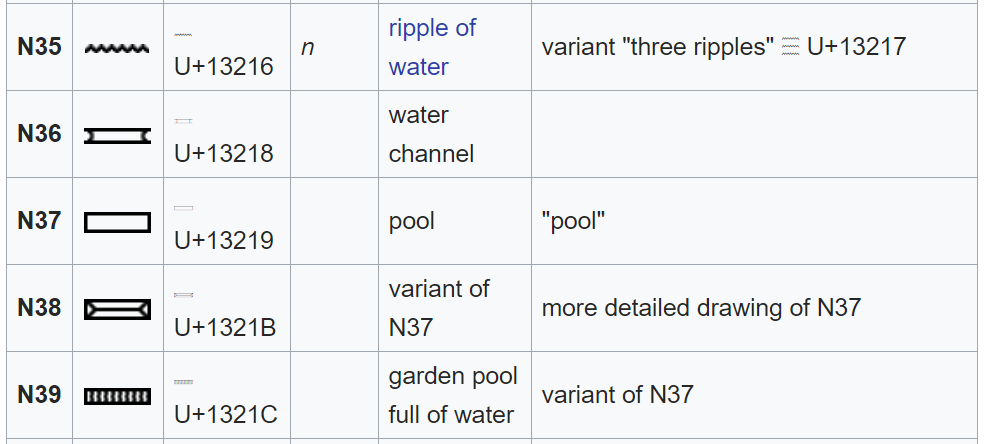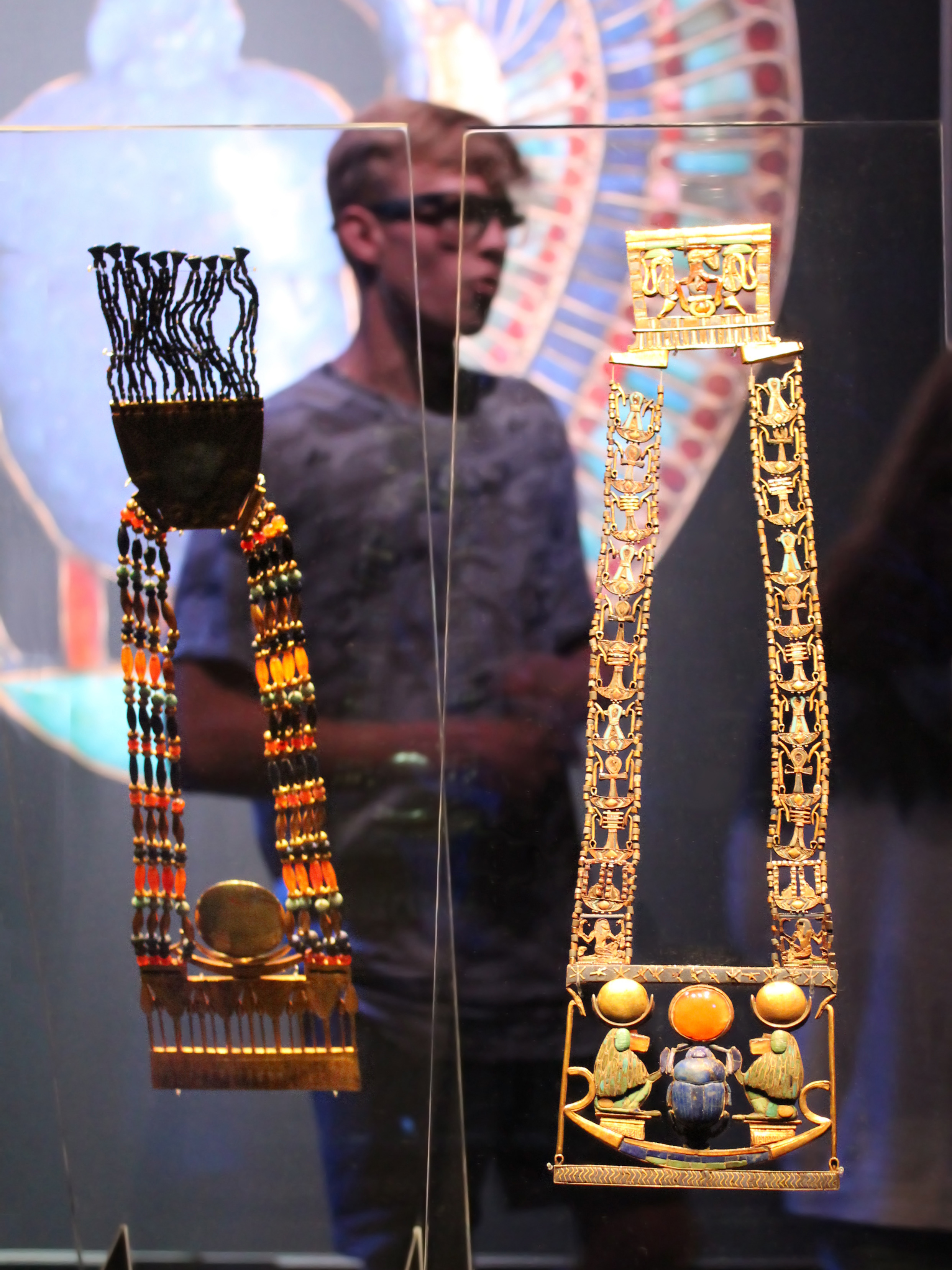
Left: The reverse of the pectoral in the Form of a Gold Boat and Silver Lunar Disk
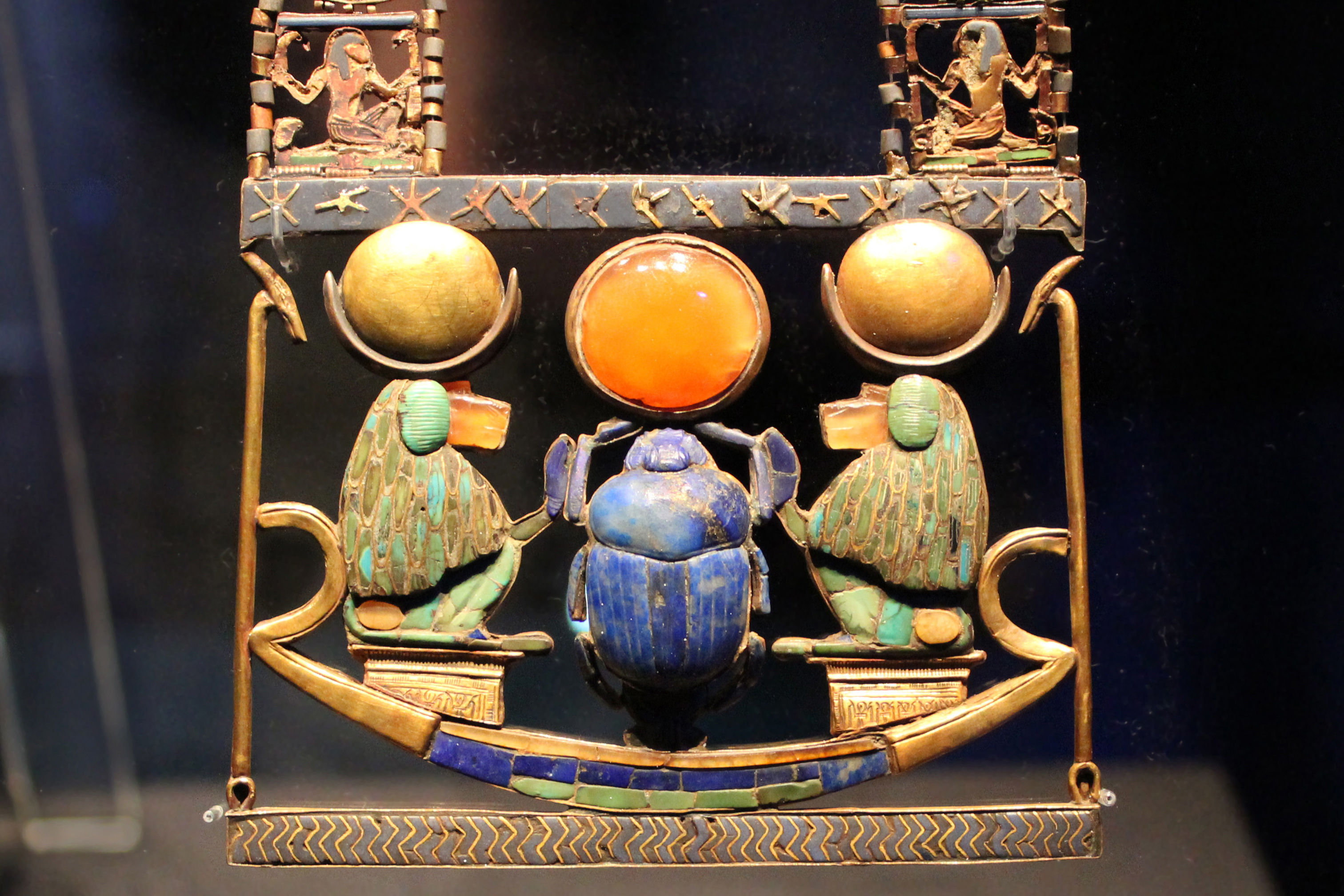 Necklace of the Rising Sun
Necklace of the Rising SunGold, Silver, Lapis Lazuli, Turquoise, Faience, Calcite
Width of pectoral 11.5cm (4.52 inches)
Grand Egyptian Museum #136 (Formerly JE 61885)
The exhibition catalog identifies the two baboons as being the deity Thoth (Djehuty), but it's possible they do not represent a Name of Netjer (deity), but a Netjeri, divine spirits which are not actual gods. If so, they would still have a connection to Djehuty, possibly being created by him, as they are wearing the lunar crown he wears.
"The striking design of the pectoral shows the sun at its rebirth at dawn as the beetle Khepri, rising on the circular shen-sign of universal power in the morning bark. Khepri and the sun-disk are adored by two baboons, creatures which in nature greet the morning sun with howls, and in Egyptian mythology worship the rising sun with raised paws."
(T.G.H. James, Tutankhamun, Metro books/White Star 2000) page 216)
The pectoral is bordered by two Was scepters:
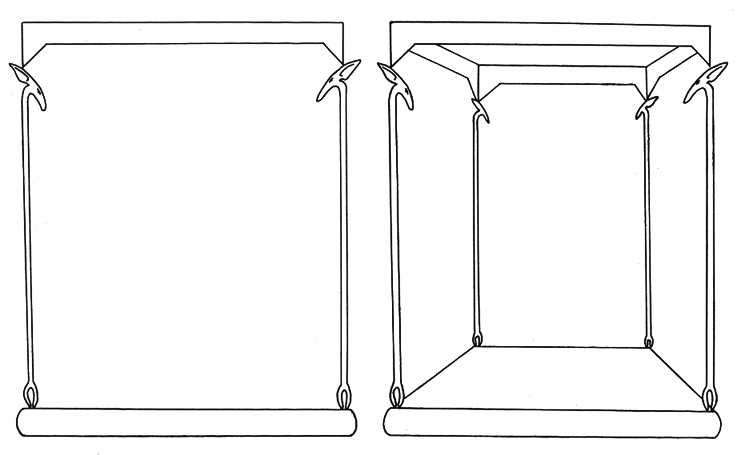 Was scepters shown standing on the hieroglyph denoting earth (ta) and holding up the sky (pet hieroglyph), (from _Symbol and Magic in Egyptian Art_, by Richard H. Wilkinson, page 139) The two-dimensional depiction is understood to represent three dimensions, thus two was scepters represent four. In the pectoral the Was scepters are holding up the sky and resting on the waters.
|
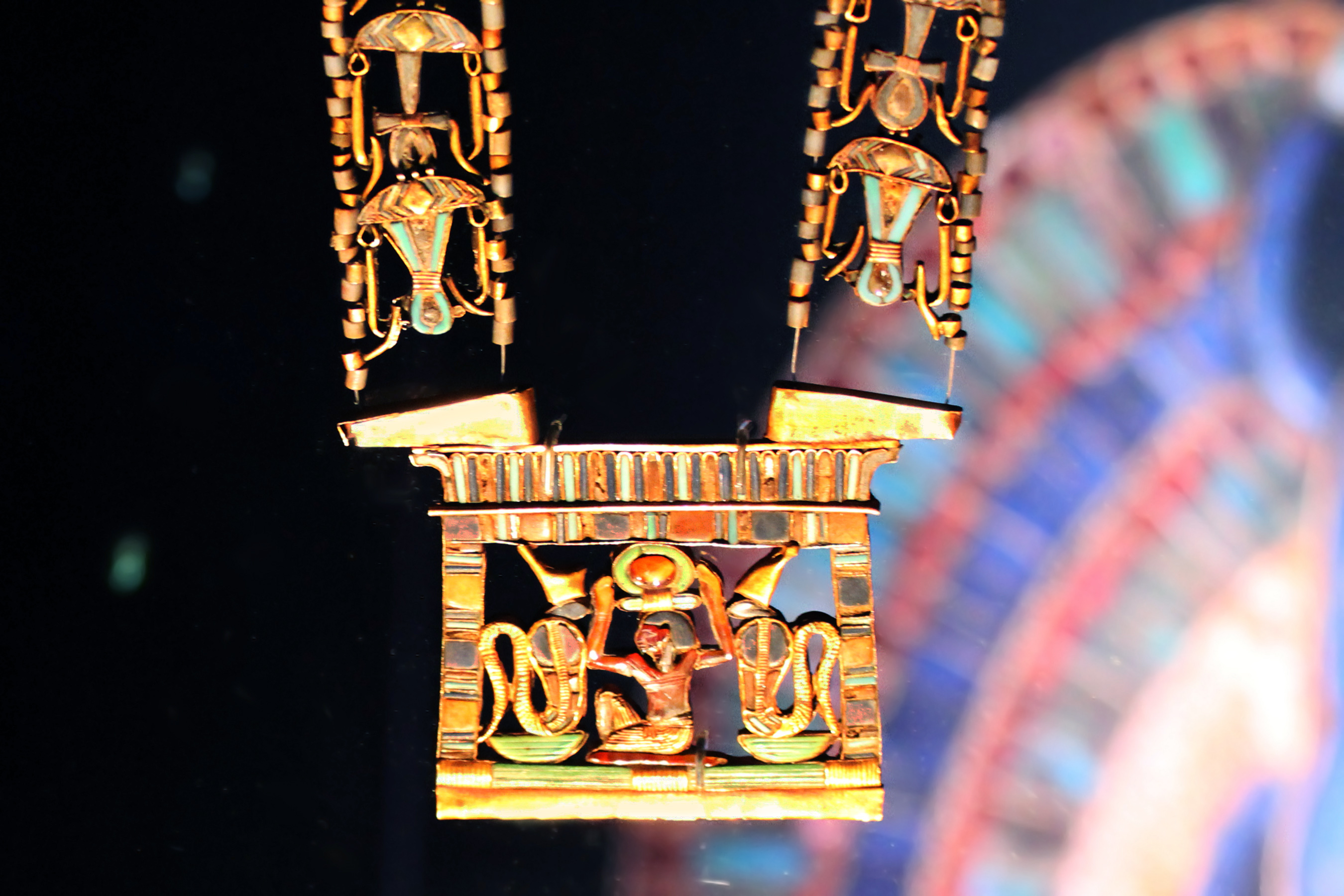
Width of counterpoise 6.3cm (2.48 inches)
